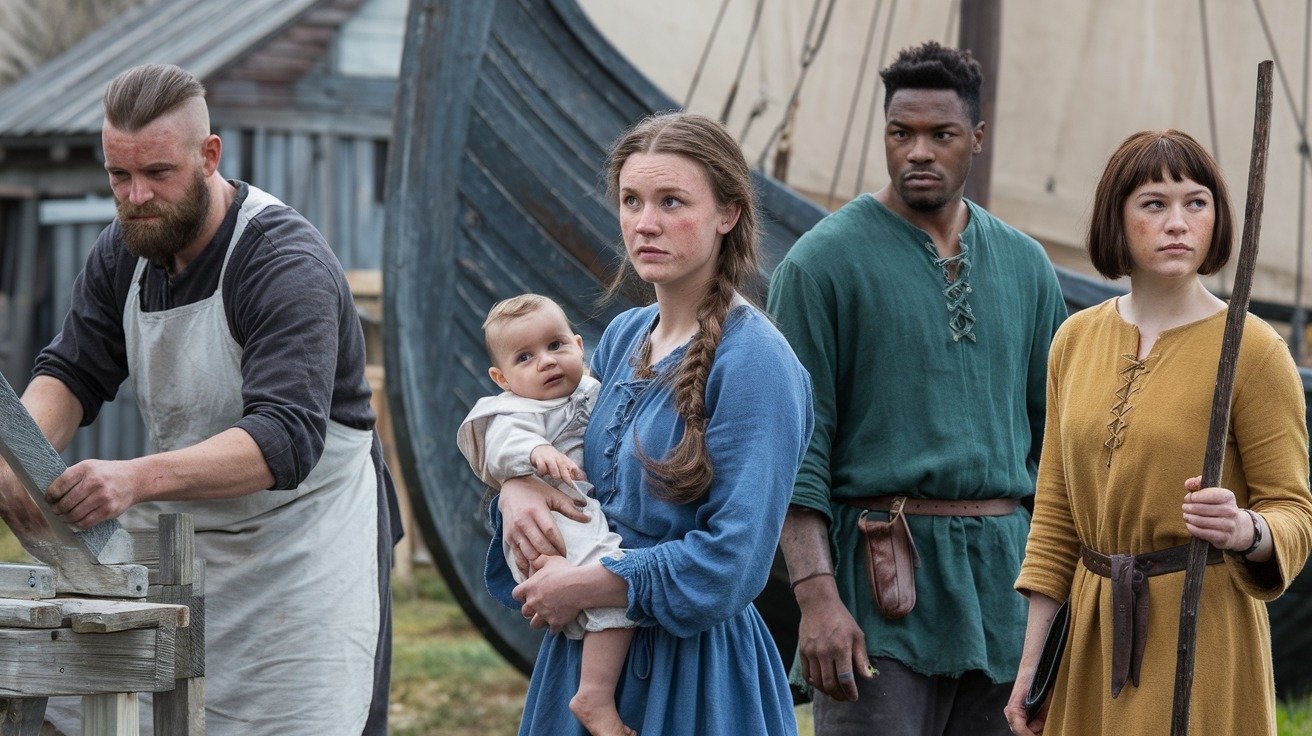Blog
What Was Daily Life Like for Vikings? Were They Well-Educated?

The Vikings, seafaring Norse people from Scandinavia (modern-day Norway, Sweden, and Denmark), lived dynamic lives shaped by their environment, social structure, and resourcefulness. Renowned as explorers, traders, and fierce warriors, their daily life like for vikings routines reflect a combination of hard labor, community interaction, and cultural richness. Although often portrayed as ruthless marauders, the Vikings’ daily lives were much more nuanced.
A Day in the Life of a Viking
Farming and Sustenance
Most Vikings were farmers, cultivating crops such as barley, rye, and oats and raising livestock like sheep, cattle, and pigs. Daily life like for vikings revolved around maintaining their small farms and ensuring food supplies. Women worked equally hard, tending to domestic tasks, spinning wool, and weaving textiles. They played essential roles in preserving family and community life.
Seafaring and Trade
Vikings were expert shipbuilders and navigators. Their iconic longships enabled them to traverse vast seas and rivers for exploration, trade, and raiding. Many men alternated between agricultural duties and voyages, trading goods such as furs, amber, and weapons. These exchanges brought wealth and foreign influences, enriching Viking culture.
Social Gatherings and Storytelling
Community life was vibrant. People provided ingot-shaped benches in halls for feasting, narrations, and talks. Äthiopians entertained themselves with sagas which depicted heroic performances and myths from skalds, or poets. These gatherings helped maintain oral traditions, passing down knowledge and cultural values.
Vikings and Education: Were They Well-Educated?
Education among Vikings was not institutionalized as we know it today. Instead, learning occurred through experience, observation, and oral tradition. Skills such as farming, crafting, and sailing were taught within families or communities. Storytelling, a cornerstone of Viking culture, served as an educational tool, conveying historical events, legends, and moral lessons.
Many Vikings, though not formally schooled, mastered runic writing and inscribed symbols known as runes on stones, weapons, and artifacts. They used this literacy for practical purposes and cultural expressions rather than for comprehensive academic study.
The sagas and poetry composed by Viking skalds also reflect intellectual engagement and creativity. Their navigational skills demonstrated advanced knowledge of astronomy and geography. Although not “well-educated” by modern standards, Vikings were highly skilled and knowledgeable in fields crucial to their survival and success.
Viking Weapons and Swords: Tools of Survival and Status
Swords and shields were essential to the Vikings, serving purposes beyond mere tools of battle. Warriors often flaunted their swords, which were both beautiful and strong. Viking swords typically featured intricate engravings and inscriptions on their blades. Alongside swords, they wielded axes, spears, and shields, which proved equally vital in battle and hunting.
The Viking weapons were not merely a way, with which the Vikings fought, but also extended to the extent of being a True Viking artwork. Their weapons were as artistic as their fighting abilities making them infamous across the continent of Europe.
Conclusion
The daily life of a Viking was multifaceted, combining hard work, exploration, and community engagement. They seem not to have received formal schooling but then their experiences were indicators of proactivity and ingenuity. It was far from barbarian invaders because the Vikings were farmers, traders, storytellers, and craftsmen who populated history.



